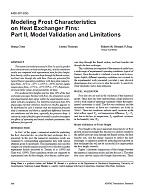In-situ tests to determine soil thermal conductivity and borehole resistance are often difficult to interpret due to variability in the heat rate during the test. This paper demonstrates that simply smoothing out fluctuations in temperature data will not remove the distortions caused by variable rates. Instead, an algorithm is developed to properly remove variable heat rate effects. The output of the algorithm is the transient, ground-loop temperature curve that would have been observed if the heat rate would have remained constant. Then, the processed temperature curve can be analyzed by the simple line-source model or alternative models. The algorithm is validated by removing variable-rate effects from a test on a laboratory sandbox with known soil thermal conductivity and borehole resistance. The algorithm successfully removes variable- rate effects in two field borehole tests, where estimates of thermal conductivity based on raw temperature readings vary by as much as a factor of three, depending on the time interval chosen for the analysis.
Units: Dual
Citation: Symposium, ASHRAE Transactions, vol. 109, pt. 2, Kansas City, 2003
Product Details
- Published:
- 2003
- Number of Pages:
- 12
- File Size:
- 1 file , 1 MB
- Product Code(s):
- D-20853


